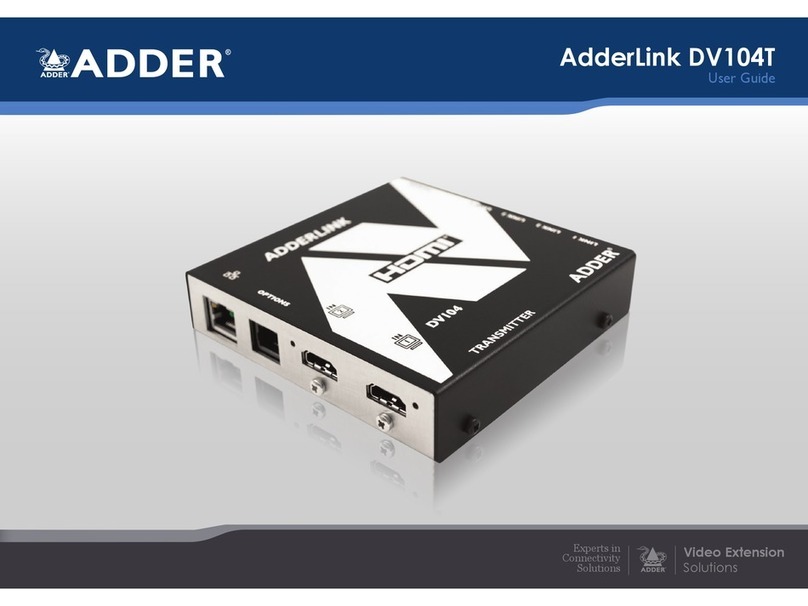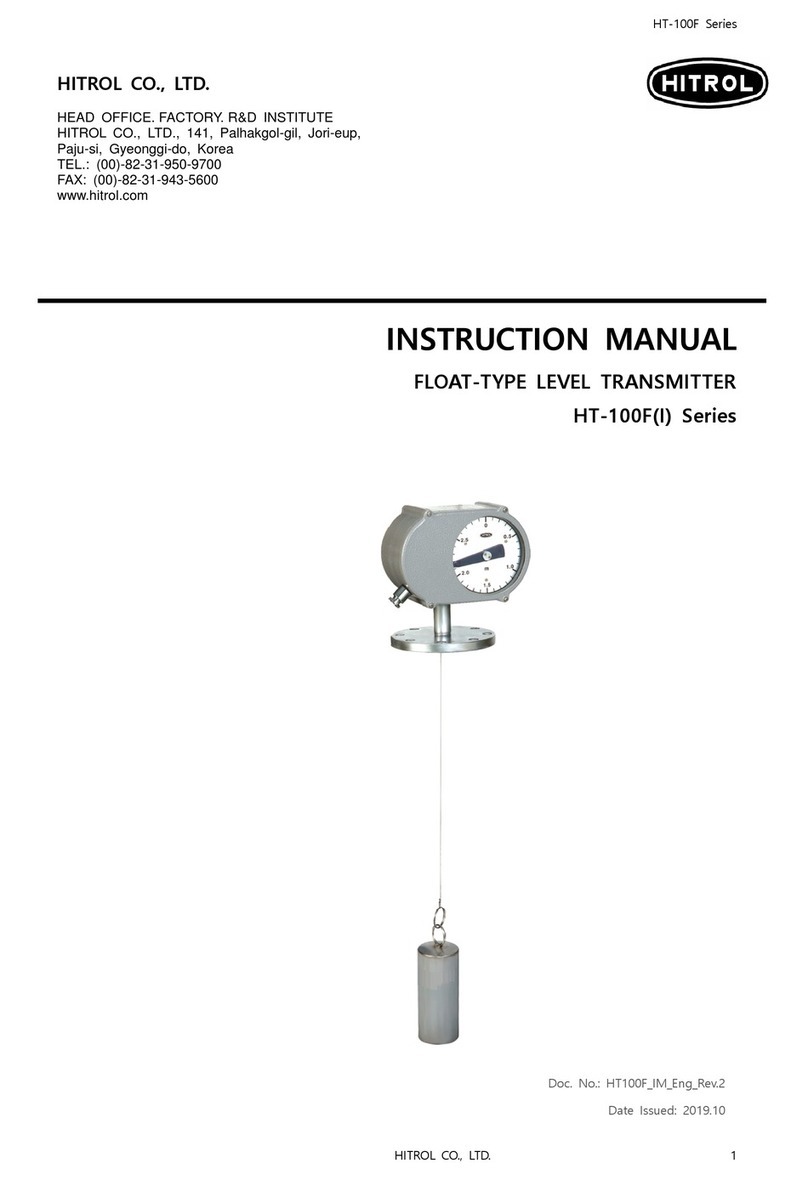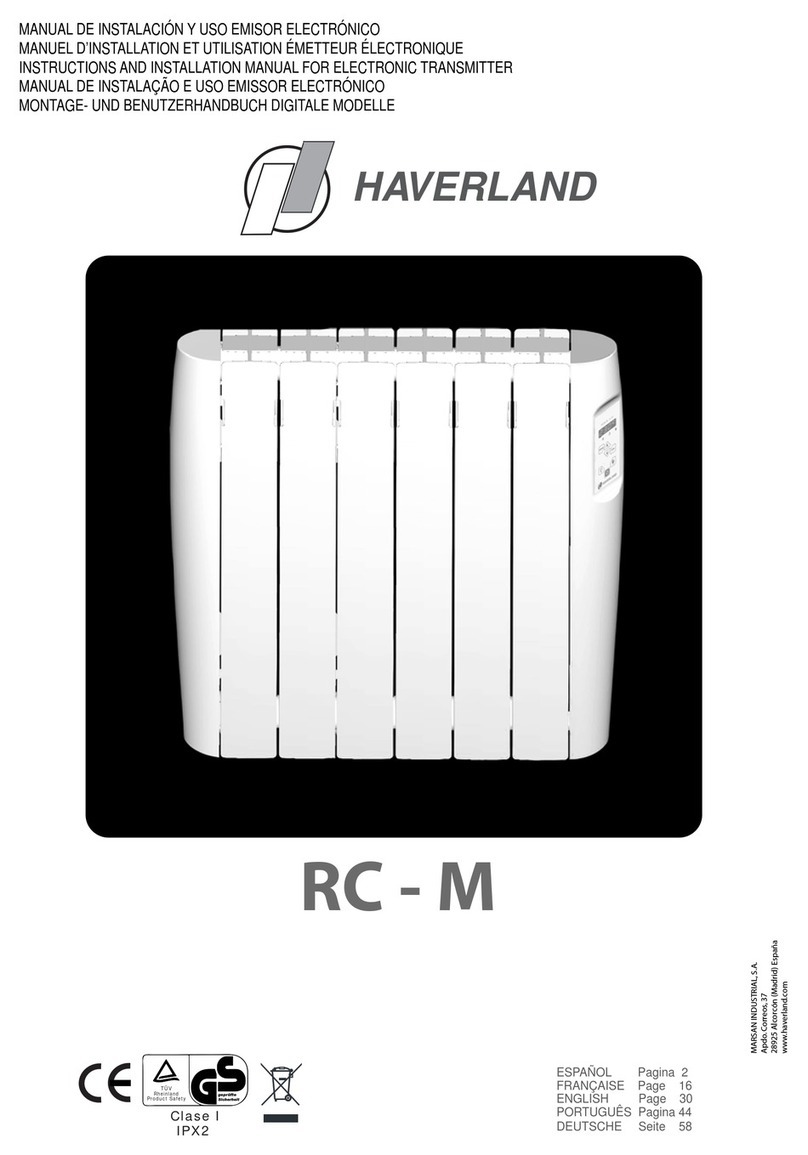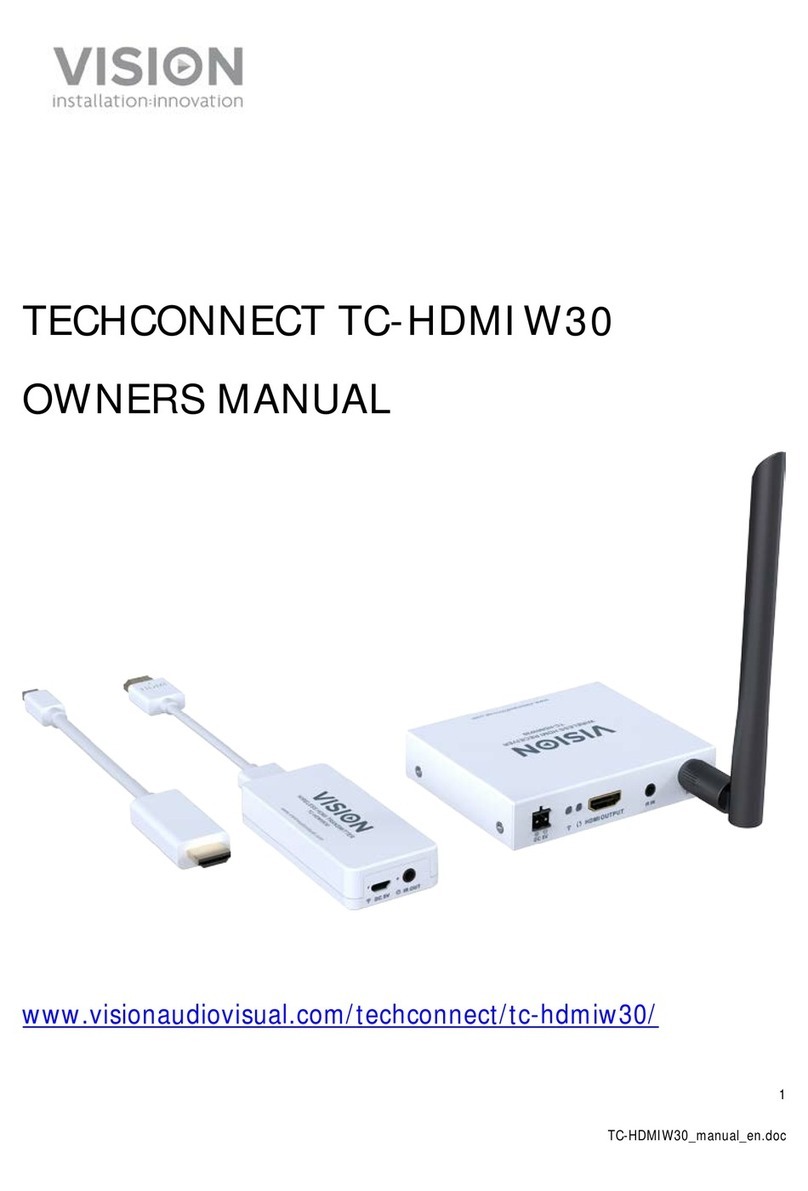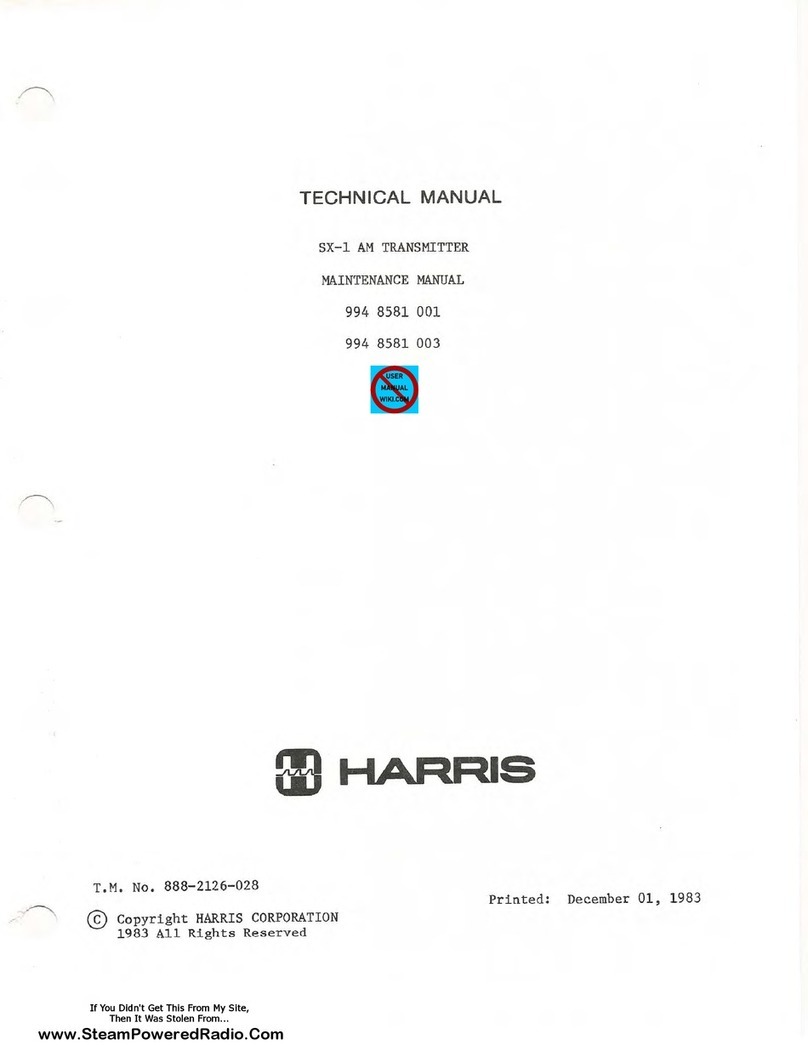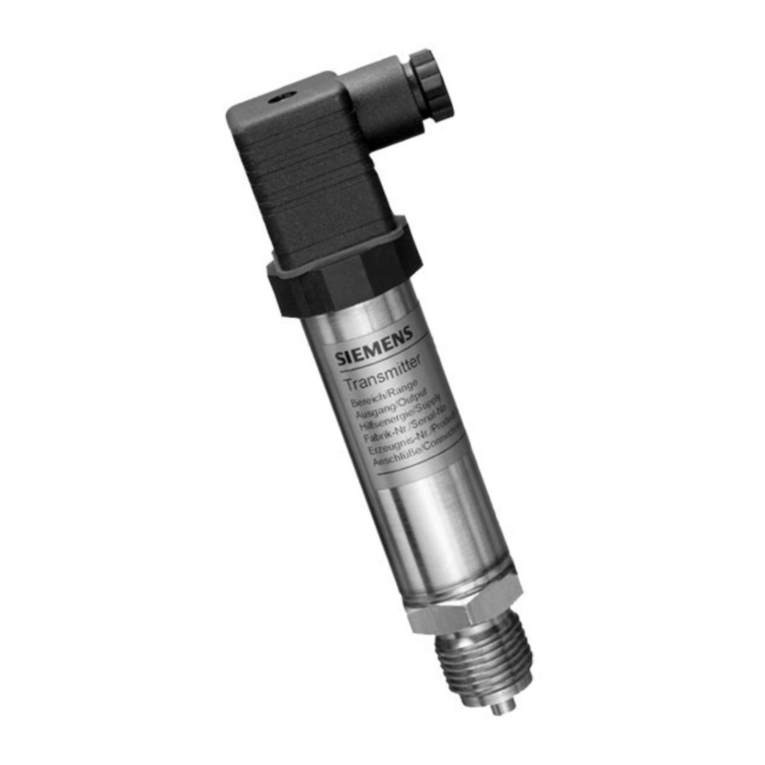Tauntek IRM pc board Quick start guide

IRM pc board/kit Assembly Notes. Ver 1.5 6/21/08
Please read before assembling your kit.
Make sure you have the polarity correct before applying voltage to your board. Incorrect polarity can damage the
voltage regulator, the IRMimic chip, and the IR sensor. Pin 1 (square pad) of the header should be connected to the
positive voltage input.
You may want to install the lower components (resistors) first and install the higher ones last. That gives the most time
for the board to lie flat while you are trying to solder it. You will need to bend the resistor leads fairly close to the body
of the resistors to fit the hole spacing used.
The 4.7 uF and 1000 uF capacitors are polarized, and must be installed correctly. The square pad is the positive end,
and is also marked with a + sign nearby. The negative side of the capacitor is marked with a – sign.
Make sure that the notch on the chip is next to the square pad (pin 1) before soldering.
To use the IRM board with a matrix of keys, one for each command, install R6 and not R5. To use it with an MCU,
install R5 and not R6.
The voltage regulator, if used, IR sensor, and transistor must be installed as shown on the parts placement diagram. The
dome-shaped bulge on the IR sensor faces away from the center of the board.
When installing the crystal, keep it slightly away from the top side of the PC board, so it won’t touch any traces. One
way to do this is to cut a small strip of thin cardboard, about 3/16” wide, and place it between the two leads of the
crystal, between the crystal and the board, to lift the crystal up a little while it is being soldered. After soldering, pull the
cardboard out.
The flat side of the IR LED should be closer to the negative, or cathode lead. This end connects to the 2N3904
transistor. The lead farther away from the flat is the positive, or anode end, which connects to the 22 ohm resistor. You
may want to bend the LED leads so that the LED will face sideways, instead of straight up. The flat side (or in some
cases, a small notch instead) of the red LED should be closer to the negative, or cathode lead. This end connects to pin
18 of the IRMimic chip. If the red LED doesn’t light when you have power applied to the kit and you go into “learn”
mode, it may be installed backwards. This won’t hurt it, it just won’t light.
Pin one of the connector header has a square pad on the pc board. Pin two is across from it. The odd-numbered pins are
down the outside of the connector, and the even-numbered ones are down the inside.
To attach the connector to the ribbon cable, slide one end of the cable into the interior of connector, and allow about one
half inch of it to stick out the other side. The ribbon cable should fit nicely into the ribbed lower side of the top part of
the connector. Check the centering of the cable to insure that there is a wire above each of the contacts in the lower
section. The connector should lie across the ribbon cable, perpendicular to it. You may want to place a small piece of
scotch tape from the ribbon cable, across the top part of the connector, and to the ribbon cable on the other side, to hold
the connector in the correct position. Once you have it placed properly, place the connector in a vise and squeeze the
two halves of the connector together slowly until the
top half locking pieces
snap into place on both sides. This will
force the cable onto the contacts in the lower part of the connector, which will cut through the insulation and make
contact to the wires. (If you are not pleased with the way it looks after the two halves are pressed together, you can
gently pry out the locking pieces at either end of the connector and slide the top part up, then carefully remove the cable
from the contacts and try again. Don’t try taking the connector apart after squeezing it unless you are pretty sure you
need to. An ohmmeter can be used to check for shorts or open contacts. You can use a resistor lead to probe the
connector contacts.) The outer wire of the cable, near the pin one side of the header, connects to pin one of the header.
The next wire connects to pin 2, etc
.
.
The IR LED current can be drawn from either the voltage regulator output, or from the +V DC input to the board. To use the
regulator’s output, install only R7. To use the +V voltage, install only R8. If no regulator is installed, and you intend to power
the board directly from the +V input, install both R7 and R8. This will connect +5V to +V. Make sure that the voltage you are
feeding in is in the range 3V to 5V, to avoid damage to the circuit. Feeding the LED from the input voltage will keep the

regulator from having to supply the LED current. Either configuration should work fine. If you use a voltage other than 5V to
drive the IR LED, you will need to change R3 to avoid changing the LED current. The 22 ohm resistor with a 5V supply will
result in approx 160 mA of current through the LED when it is on. This value was chosen to allow controlling most equipment
from approx. 20 ft or more. If you don’t need this much range, you can reduce the current, by increasing the value of R3. Please
do not increase the LED current much above the 160 mA value, as you may damage the IR LED. LED current can be
approximated using the following formula:
I = (+V – 1.5) / R3
If 5V and 22 ohms are used, the result is 159 mA. 1.5V is the “On” voltage of the LED itself. The voltage across the
transistor is low enough that it can be ignored for this calculation.
Voltage and current:
The 78L05 regulator supplied with the kit requires approx 6.7V minimum to provide 5V
.
It can tolerate a maximum
input voltage of 35 volts. This regulator is rated for 100 mA maximum continuous output current, but is capable of peak
currents of around 250 mA at 25 degrees C. With no heatsink, the regulator can dissipate approx 0.7 watts. (Exceeding
this value will cause it to shut down.)
Typical idle current for the IRM board alone is about 3 mA, which is the idle current of the 78L05 regulator. When the
Learn LED is on, the current should increase to about 18 mA. Other voltage regulators can be used in place of the
78L05, if you need lower idle current, or minimum input voltage lower than 6.7Volts. Two choices might be LP2950 or
LM2931 types. The TO-92 versions of these have the same pinout as the 78L05. If you select a lower quiescent current
regulator, you may also want to change to a 50-100 uF electrolytic capacitor on the output of the voltage regulator, for
better dynamic regulation. Also, you can use the board without a voltage regulator, provided you have available a
voltage between 3 and 5V that can supply the necessary current.
Without the regulator, the idle current should be less than 5 uA.
Power-On Reset:
The IRMimic chip has an internal circuit that senses when power is removed and restored. This is used to reset the
microprocessor on power-up. The 1000 uF capacitor used on the IRM board may take a while to discharge if power is
removed, so if power is restored within a few seconds of removal, the chip may never get a reset signal. If the red LED
does not light when power is applied, the chip did not “see” the loss of power. This may not cause a problem, but can be
avoided by shorting together the power supply input terminals momentarily after power has been removed to discharge
the capacitor.
Resistor color bands:
0 Ohm shorting jumper single black band
22 Ohms red red black gold
100 Ohms brown black brown gold
240 Ohms red yellow brown gold
470 Ohms yellow violet brown gold
10K Ohms brown black orange gold
Capacitor Marking:
0.1 uF caps may also be marked “104”
And finally, to quote Heathkit:
Always use rosin core, radio type solder (60:40 or 50-50 tin lead content) for all of the soldering in this kit. The
warranty will be void for any kit in which acid core solder or paste has been used.
This manual suits for next models
1
Table of contents
Popular Transmitter manuals by other brands
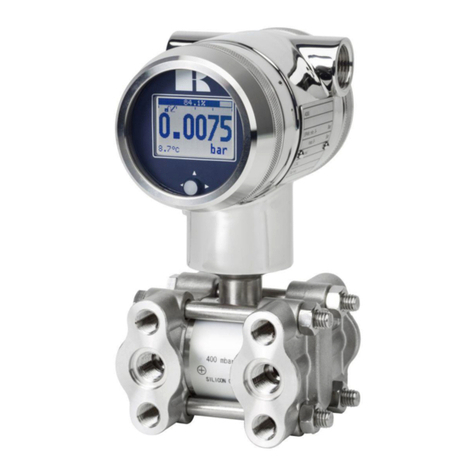
KLAY-INSTRUMENTS
KLAY-INSTRUMENTS DP-4000 Series instruction manual
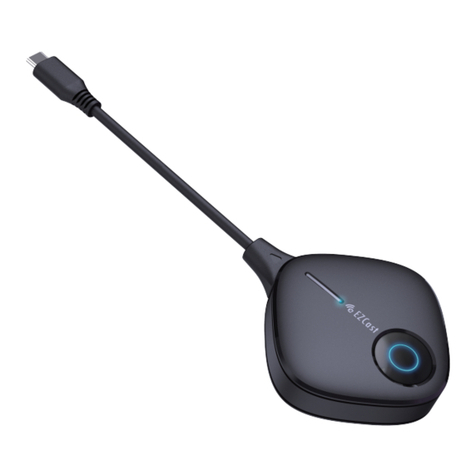
EZCast
EZCast TwinX C-1 quick start guide
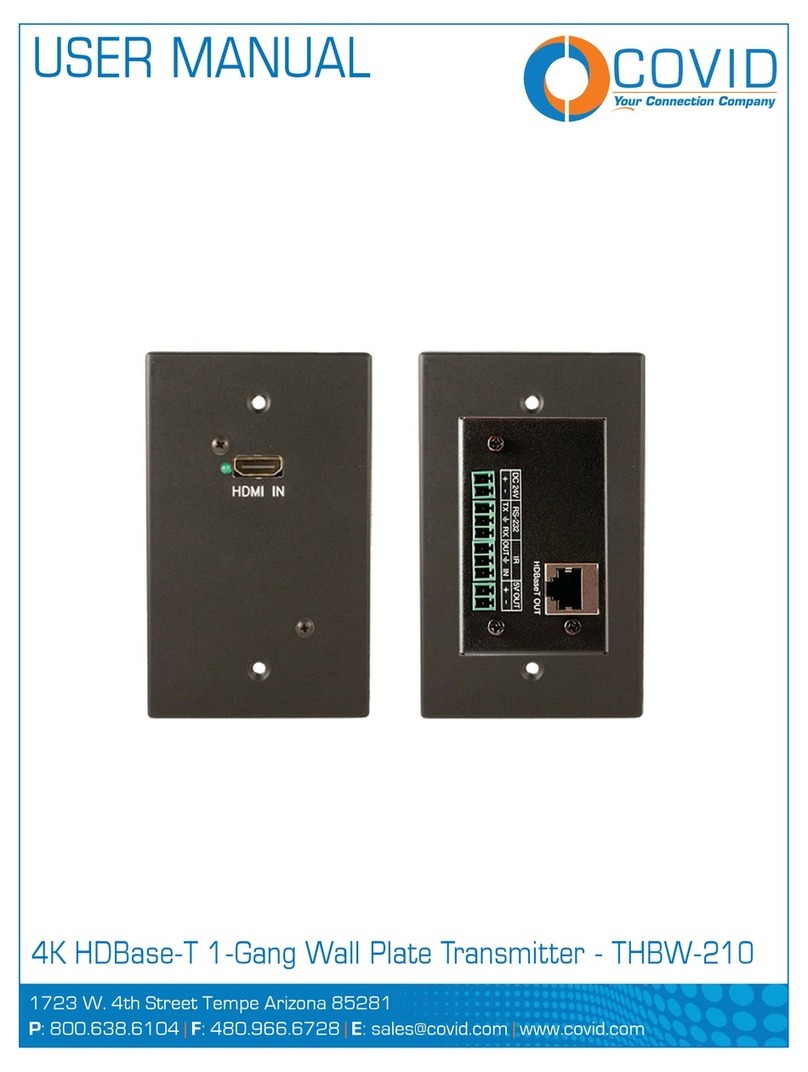
Covid
Covid THBW-210 user manual

Audiovox
Audiovox Pursuit PRO-OE4 Programming guide
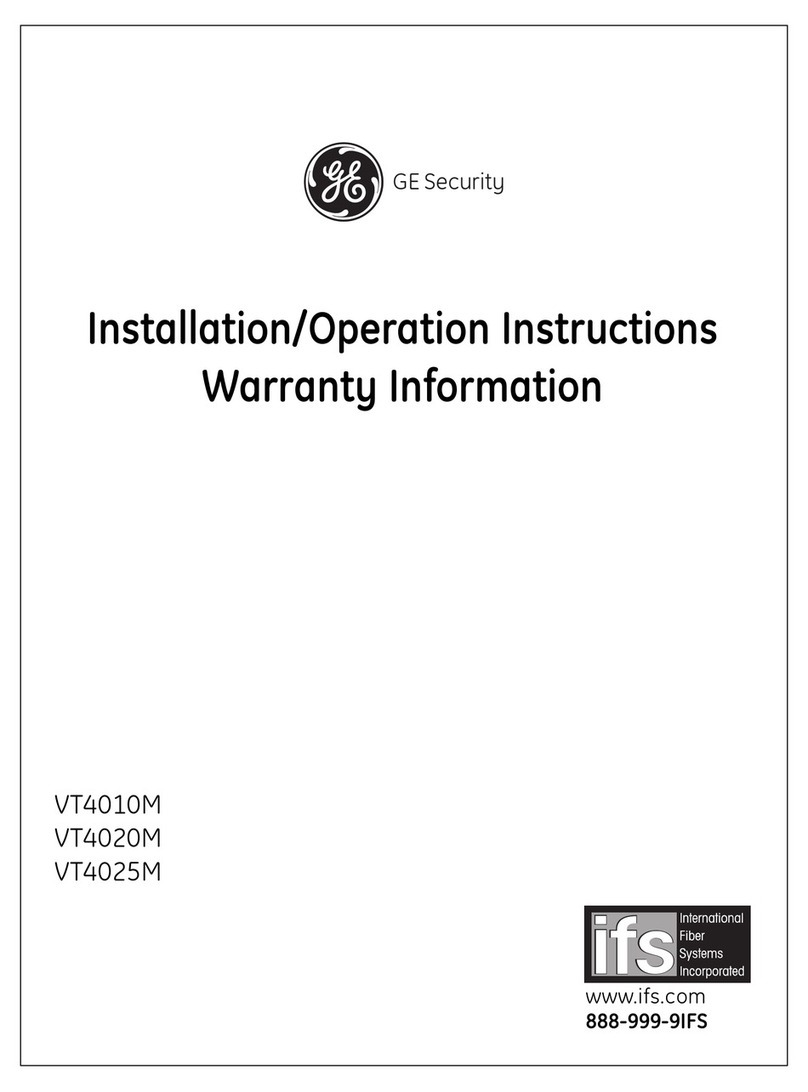
GE
GE VT4010M Installation/operation instructions warranty information
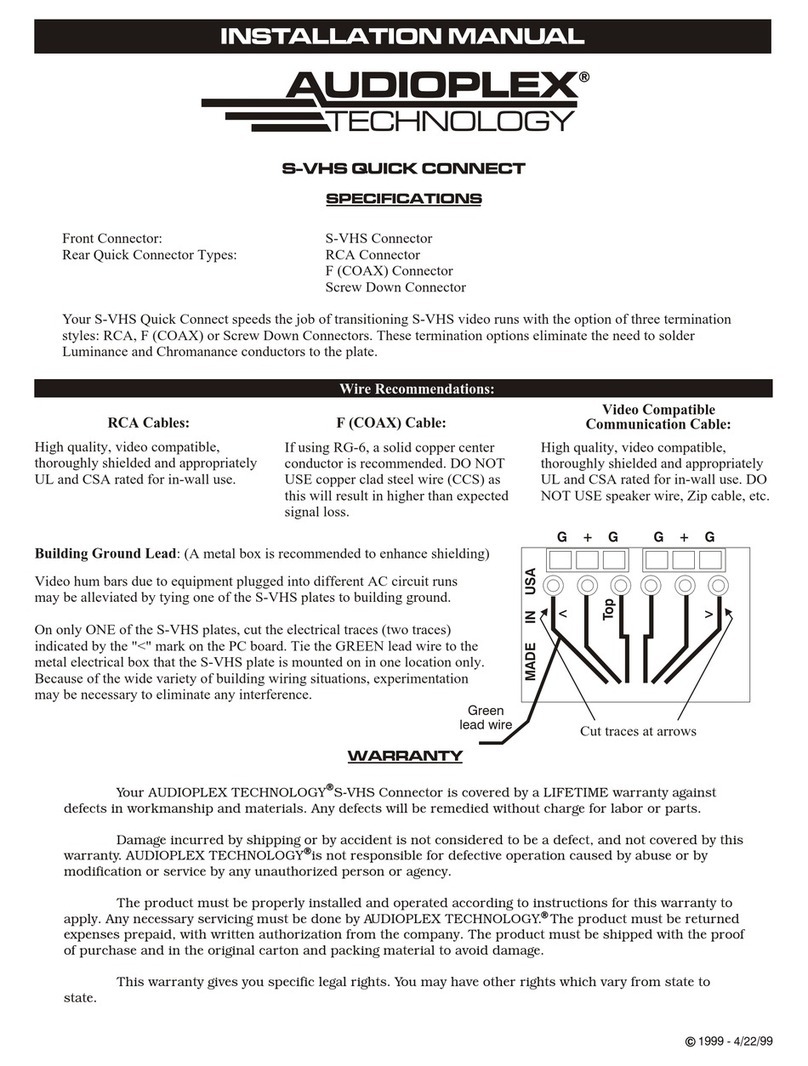
Audioplex
Audioplex S-VHS QUICK CONNECT installation manual




